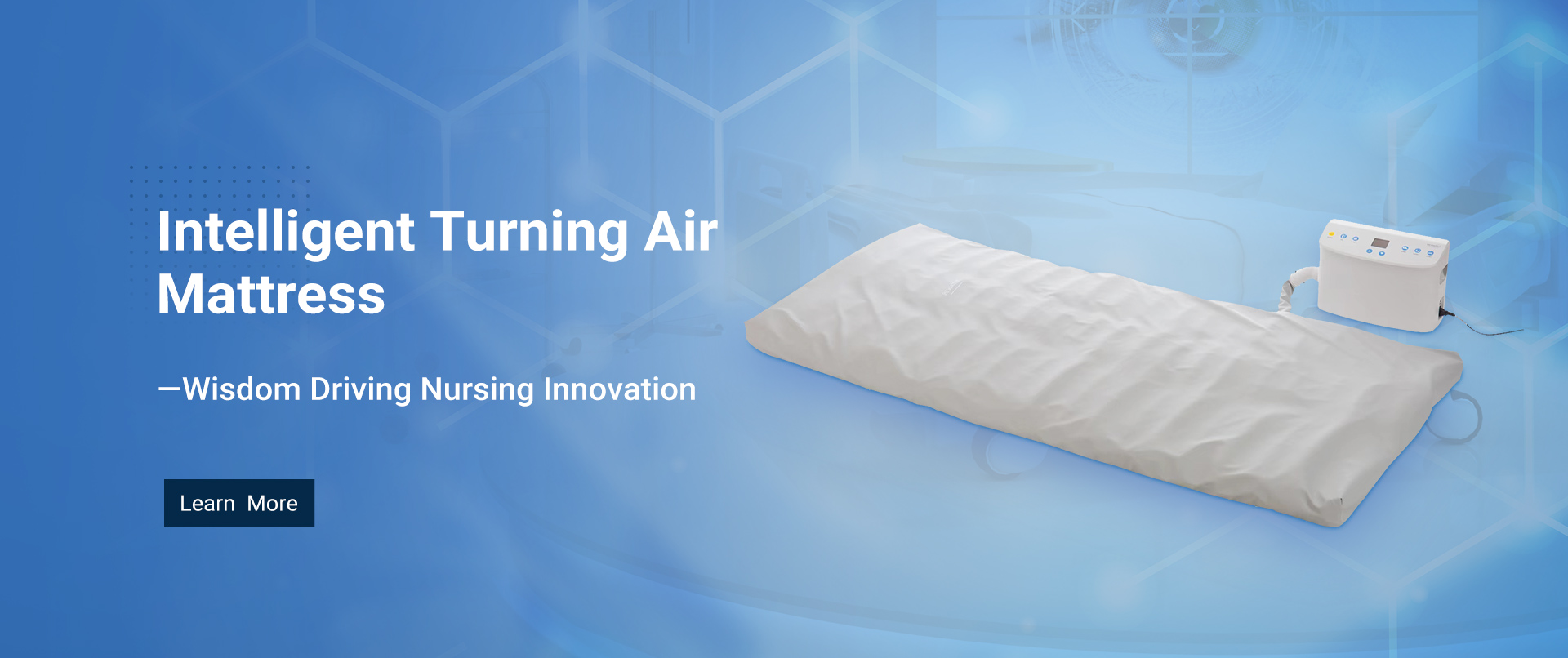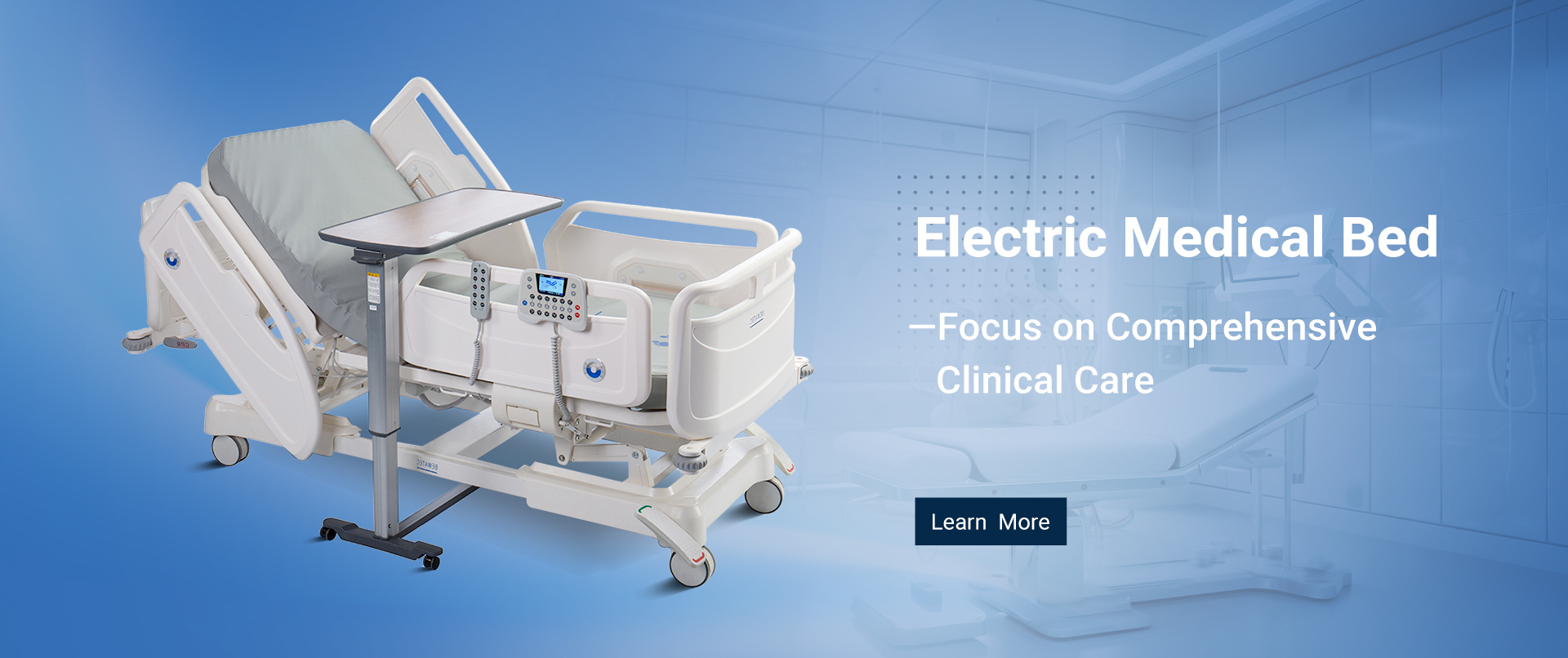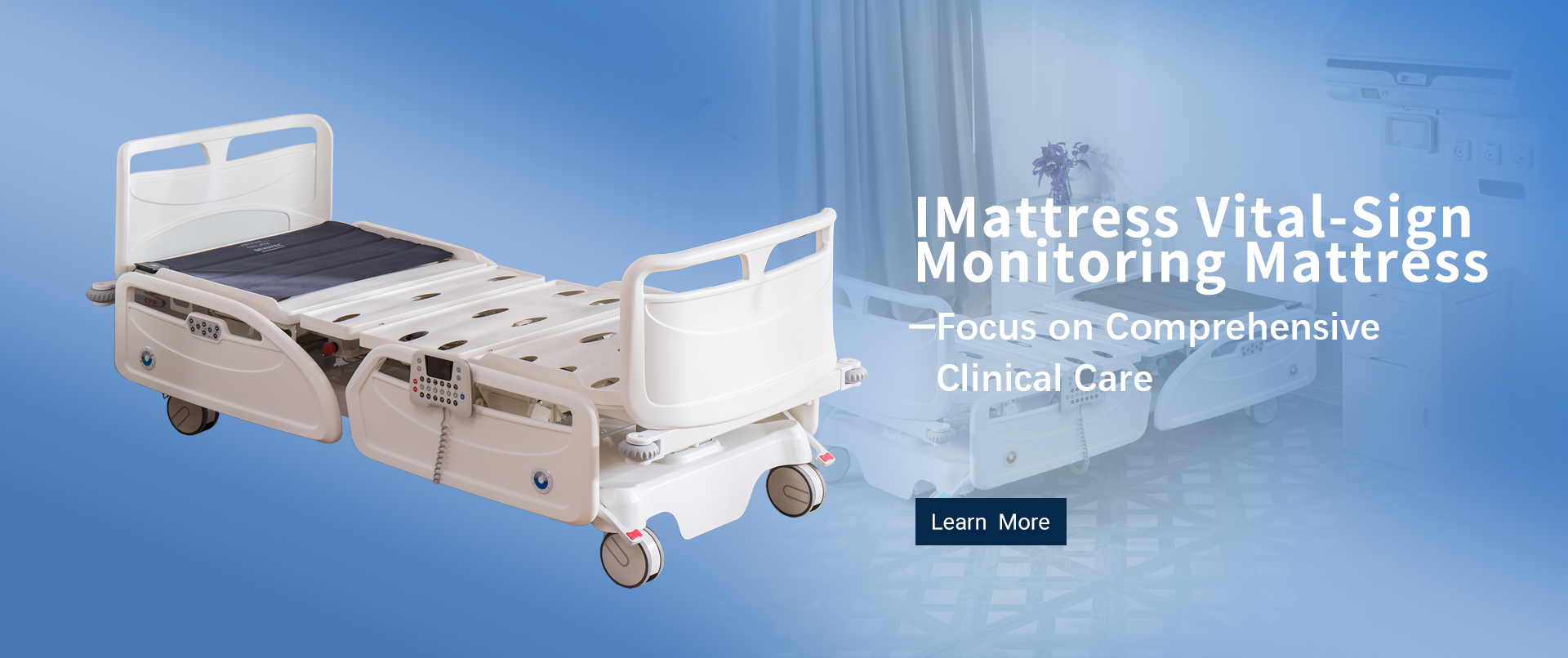
The Ultimate Guide to Choosing the Best Electric Medical Bed for Home Care
Table of Contents
- Understanding the Different Types of Electric Medical Beds Available for Home Care
- Key Features to Look for in Electric Medical Beds for Enhanced Comfort
- Evaluating Safety Standards and Regulations for Home Medical Beds
- Comparing Costs: Budgeting for Your Electric Medical Bed Investment
- Choosing the Right Size and Design for Your Home Care Needs
- Customer Reviews and Recommendations: Finding the Best Electric Medical Beds
- Enhancing Patient Comfort and Care: The A7 Electric Medical Bed with Seven Functions from Aceso Series
- FAQS
- Conclusion
- Related Posts
 Picking the right electric medical bed for home care isn’t just a technical decision—it's a pretty big deal that can really make a difference in quality of life for both patients and caregivers. I recently read a report that says the demand for electric hospital beds is expected to grow pretty steadily, around 6.1% annually over the next five years. That’s mainly thanks to our aging population and the rise in chronic health issues. It really highlights how essential these beds have become for providing effective and comfy home care.
Picking the right electric medical bed for home care isn’t just a technical decision—it's a pretty big deal that can really make a difference in quality of life for both patients and caregivers. I recently read a report that says the demand for electric hospital beds is expected to grow pretty steadily, around 6.1% annually over the next five years. That’s mainly thanks to our aging population and the rise in chronic health issues. It really highlights how essential these beds have become for providing effective and comfy home care.
Dr. Laura Jennings, who’s pretty much a go-to expert in home health equipment, points out that choosing the right electric bed is super important: “A good electric medical bed doesn’t just add comfort—it can actually speed up recovery and make things way easier at home.” With so many options out there—from simple models to fancy features like customizable positions or weight sensors—it can feel a little overwhelming trying to decide which one is best. Understanding the different kinds and what they can do is key to keeping things safe and supporting specific health needs. So, as we get into this guide, I’ll walk you through the main things to think about when picking the perfect electric medical bed for your home setup.
Understanding the Different Types of Electric Medical Beds Available for Home Care
When selecting an electric medical bed for home care, it's vital to understand the various types available to ensure optimal patient comfort and safety. Electric medical beds generally fall into three categories: full-electric, semi-electric, and manual. Full-electric beds allow users to adjust the bed's height and position using a remote control, making them ideal for patients with limited mobility. In contrast, semi-electric beds combine powered head and foot adjustments with manual height controls, providing a balance between convenience and cost. Manual beds, while the least expensive option, require physical effort to adjust, which may not be suitable for all patients.
According to a report by Grand View Research, the global electric medical bed market size was valued at approximately $4.5 billion in 2020, with a projected compound annual growth rate (CAGR) of 5.9% through 2028. This growth underscores the increasing demand for comfortable home care solutions that facilitate the recovery process.
Companies like Bewatec (Zhejiang) Medical Device Co., Ltd. are at the forefront of this industry transformation, focusing on delivering smart medical care solutions designed to enhance patient experiences and safety. By integrating digital technologies, Bewatec is committed to providing personalized care journeys that cater to individual patient needs, solidifying its position as a leader in specialized smart medical solutions.
Key Features to Look for in Electric Medical Beds for Enhanced Comfort
When selecting an electric medical bed for home care, it's essential to focus on features that enhance comfort and usability. One key feature to consider is the adjustability of the bed. According to the National Institute on Aging, adjustable beds can help alleviate pressure sores and improve circulation, which is particularly beneficial for individuals with limited mobility. Look for beds that offer various positions, including a seated position for eating and reading, as this can significantly enhance the user's overall quality of life.
Another important aspect is the mattress quality. A high-density foam mattress not only provides superior support but also helps in temperature regulation, ensuring the user remains comfortable throughout the night. The American Journal of Nursing reports that up to 30% of patients in long-term care settings experience sleep disturbances due to inadequate mattress support. Investing in a mattress specifically designed for medical beds can mitigate these issues.
Tips: When assessing a bed, try opting for models with side rails and emergency power backup to ensure safety and reliability. Additionally, prioritize beds with easy maneuverability features, as they can accommodate caregivers during assistance. Always consider the weight capacity and dimensions to ensure the bed fits comfortably in the intended space while supporting the user's needs.
Evaluating Safety Standards and Regulations for Home Medical Beds
When selecting an electric medical bed for home care, evaluating safety standards and regulations is crucial to ensure patient well-being. These guidelines, primarily established by organizations such as the FDA and ANSI, dictate essential criteria that electric beds must meet to be deemed safe for consumer use. Manufacturers often undergo rigorous testing to ensure their products comply with these standards, which encompass various aspects such as weight capacity, electrical safety, and fire resistance. Investigating these certifications can provide peace of mind and assurance that the bed is designed with the user’s safety in mind.
In addition to regulatory compliance, it's important to consider how these standards translate into practical features that enhance safety. For instance, look for beds with adjustable height settings to minimize fall risk during transfers. Features like guardrails, locking mechanisms for mobility, and integrated alarms can also contribute significantly to user safety and comfort. Evaluating these elements alongside safety certifications will enable caregivers to choose beds that not only fulfill regulatory requirements but also cater to the unique needs of their patients, ultimately promoting a secure and supportive home care environment.

Comparing Costs: Budgeting for Your Electric Medical Bed Investment
When considering the investment in an electric medical bed for home care, budgeting becomes a pivotal aspect of the decision-making process. Electric medical beds vary significantly in price, with options ranging from budget-friendly models to high-end versions packed with features. It’s essential to outline your budget early on, taking into account not only the price of the bed itself but also potential additional costs such as delivery, setup, and any necessary accessories or modifications.

Understanding the total cost of ownership can guide you toward the most suitable decision for your needs. Researching different brands and comparing their features and warranty options can provide insight into the long-term value of your investment. Additionally, consider potential financial aid or health insurance coverage that may offset some of the initial expenditures. By carefully evaluating your financial plan, you can ensure that your purchase of an electric medical bed is both practical and sustainable for your home care needs.
Choosing the Right Size and Design for Your Home Care Needs
When selecting an electric medical bed for home care, the size and design are critical factors that directly impact comfort and functionality. It's essential to ensure that the bed fits seamlessly within the available space in your home while accommodating the specific needs of the patient. Measure both the width and length of the room where the bed will be placed, considering factors such as clearance for mobility aids and ease of access for caregivers. A well-sized bed not only enhances the living experience but also ensures safety and convenience during daily care routines.
Design plays an equally important role in the selection process. Electric medical beds come in various styles, from basic models to those with advanced features. Consider the patient’s preferences and specific health requirements when choosing the design. Features like adjustable height, sectional adjustments, and side rails can significantly improve usability. Additionally, aesthetics should not be overlooked; a bed that complements the home decor can create a more pleasant environment for the patient and their caregivers. Taking both size and design into account will lead to a more satisfying and practical choice in electric medical beds.
The Comparison of Electric Medical Bed Sizes for Home Care
Customer Reviews and Recommendations: Finding the Best Electric Medical Beds
When searching for the best electric medical bed for home care, customer reviews and recommendations play a crucial role in making an informed decision. Many users highlight the importance of comfort and ease of use in their feedback. Reading through various online platforms can provide insights into how each model performs in real-life situations. A bed with adjustable settings that cater to individual needs, such as height or angle, often receives praise in reviews, indicating it significantly enhances the user experience.
Tips for choosing the right electric medical bed:
First, consider the size and weight capacity of the bed. Ensure it fits your space and can support the user’s weight comfortably. Next, check for additional features such as mattress quality and warranty. A higher-quality mattress can significantly contribute to better sleep and overall health. Lastly, look for beds with easy-to-use controls and safety features, which can greatly benefit those with limited mobility.
Customer feedback often points out that the best beds are those with responsive customer service and detailed guides for assembly and usage. This can save you time and stress during setup, enabling quicker access to the care you need. Always look for beds that have positive long-term reviews, as they reflect durable quality and lasting user satisfaction.
Enhancing Patient Comfort and Care: The A7 Electric Medical Bed with Seven Functions from Aceso Series
The A7 Electric Medical Bed from the Aceso Series is a pioneering innovation in patient care, specifically designed to prioritize comfort and enhance the overall experience for patients undergoing medical treatment. With its seven functions, this bed caters to the diverse needs of patients, providing tailored support throughout different stages of care—from emergencies to recovery. The unique design of this state-of-the-art Intelligent Critical Care Bed not only emphasizes essential medical requirements but also incorporates features that significantly improve patient comfort and satisfaction.
According to a report by the Healthcare Information and Management Systems Society (HIMSS), patient comfort directly correlates with improved health outcomes. Research indicates that comfortable patients are likely to experience lower levels of anxiety and pain, which can lead to shorter recovery times. The A7 bed incorporates an adjustable height mechanism, ergonomic positioning features, and easy-to-use controls, allowing healthcare providers to efficiently manage patient positioning while ensuring comfort. This adaptability is critical in critical care settings where patient needs can change rapidly, highlighting the importance of a bed that can accommodate those fluctuations seamlessly.
In addition, the integration of advanced technology, such as monitoring systems, allowing real-time tracking of vital signs, provides an added layer of security for both patients and medical staff. According to the American Hospital Association (AHA), hospitals that invest in innovative care solutions, like the A7 Electric Medical Bed, often see a reduction in complications and an increase in overall patient satisfaction scores. This is testament to the growing recognition of the need to merge technology with compassionate care, ultimately leading to a more holistic and effective healthcare environment.
FAQS
: Electric medical beds generally fall into three categories: full-electric, semi-electric, and manual. Full-electric beds allow for height and position adjustments using a remote control. Semi-electric beds have powered head and foot adjustments with manual height controls. Manual beds require physical effort to adjust and are the least expensive option.
The global electric medical bed market was valued at approximately $4.5 billion in 2020 and is projected to grow at a compound annual growth rate (CAGR) of 5.9% through 2028, indicating an increasing demand for home care solutions.
Important features to consider include adjustability for various positions, mattress quality for comfort and temperature regulation, side rails for safety, emergency power backup, and easy maneuverability to assist caregivers.
A high-density foam mattress provides superior support and helps regulate temperature, which can prevent sleep disturbances and improve overall comfort for individuals in long-term care settings.
It's essential to measure the available space in the room, considering clearance for mobility aids and ease of access for caregivers to ensure safety and convenience during daily routines.
Design plays a significant role in usability and patient comfort. Features such as adjustable height, sectional adjustments, and side rails can enhance functionality, and aesthetic considerations can create a more pleasant environment.
Adjustable beds can alleviate pressure sores, improve circulation, and enhance the user's overall quality of life by allowing various positions that accommodate different activities like eating and reading.
Caregivers should prioritize features like safety rails, emergency power backups, bed maneuverability, weight capacity, and dimensions to ensure the selected bed comfortably fits the patient's needs and the home environment.
Yes, when purchasing for long-term use, it's important to choose beds that have durable construction, high-quality mattresses designed for medical use, and features that promote ease of care and patient comfort.
Conclusion
The article "The Ultimate Guide to Choosing the Best Electric Medical Bed for Home Care" provides a comprehensive overview of essential factors to consider when selecting an electric medical bed. It begins by exploring the various types of electric medical beds available, highlighting their unique features that enhance patient comfort. Safety standards and regulations are addressed to ensure that users can make informed decisions about their health and safety. The guide also emphasizes the importance of budgeting for an electric medical bed, offering insights on cost comparisons and the investment involved.
Additionally, the article advises on selecting the right size and design to meet individual home care needs, further personalized by customer reviews and recommendations. As a leader in specialized smart medical care solutions, Bewatec (Zhejiang) Medical Device Co., Ltd. is dedicated to providing innovative electric medical beds that enhance patient experiences and support the digital transformation in healthcare.
Related Posts
-

Transforming Patient Care: The Ultimate Guide to Electric Medical Beds and Their Benefits
-

Revolutionizing Patient Care: The Impact of Smart Medical Beds on Hospital Standards
-

Choosing the Right Medical Bed: A Comprehensive Guide to Enhancing Patient Comfort and Care
-

Unlocking Comfort: Benefits of the Best Patient Bed for Enhanced Recovery
-

Transform Your Sleep Experience: The Ultimate Guide to Manual Beds for Better Rest
-

Future Innovations in Best Hospital Equipment Bed for 2025 and Beyond









